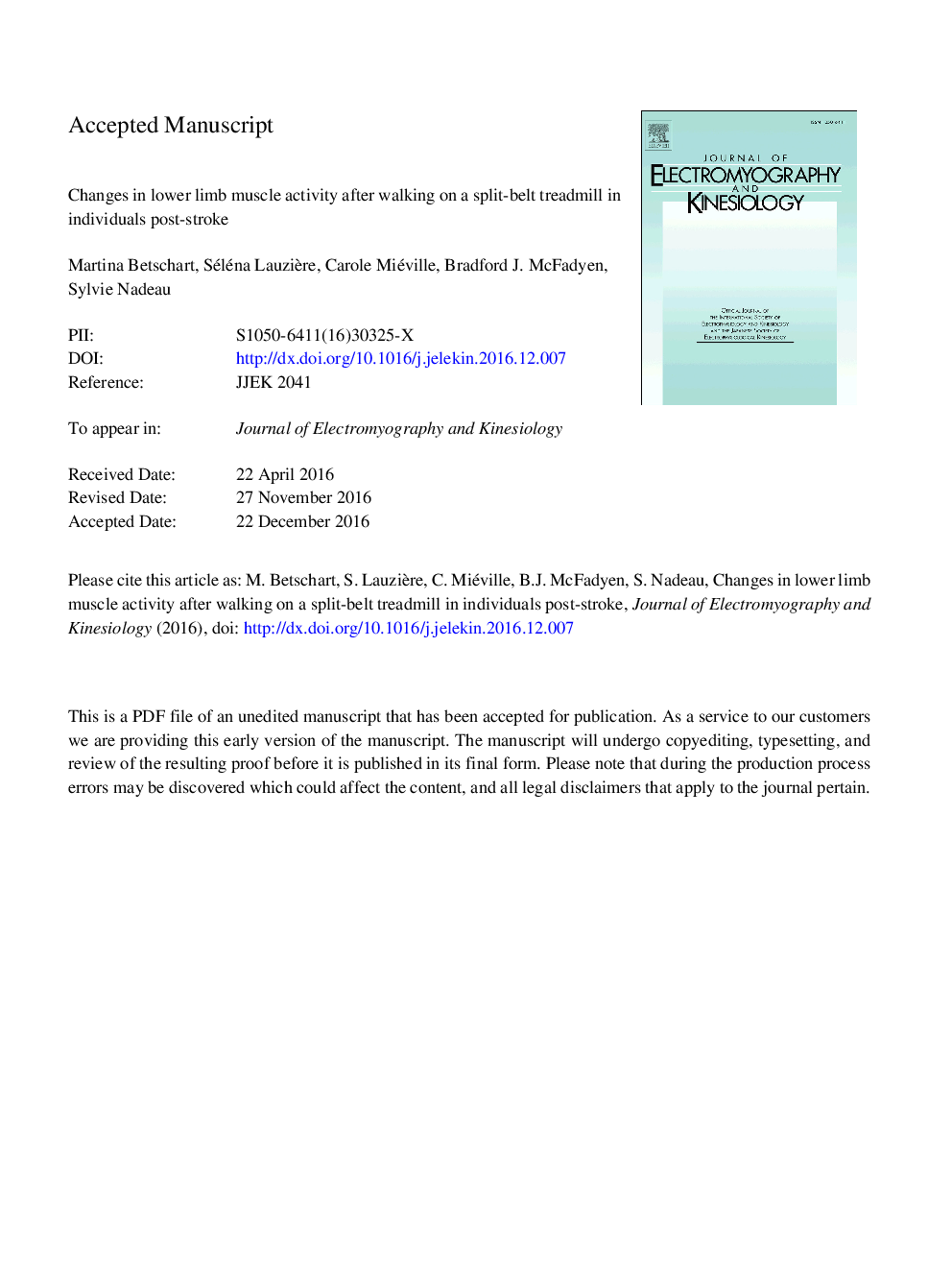| Article ID | Journal | Published Year | Pages | File Type |
|---|---|---|---|---|
| 5709526 | Journal of Electromyography and Kinesiology | 2017 | 31 Pages |
Abstract
Background: There is growing evidence that stroke survivors can adapt and improve step length symmetry in the context of split-belt treadmill (SBT) walking. However, less knowledge exists about the strategies involved for such adaptations. This study analyzed lower limb muscle activity in individuals post-stroke related to SBT-induced changes in step length. Methods: Step length and surface EMG activity of six lower limb muscles were evaluated in individuals post-stroke (n = 16) during (adaptation) and after (after-effects) walking at unequal belt speeds. Results: During adaptation, significant increases in EMG activity were mainly found in proximal muscles (p ⩽ 0.023), whereas after-effects were observed particularly in the distal muscles. The plantarflexor EMG increased after walking on the slow belt (p ⩽ 0.023) and the dorsiflexors predominantly after walking on the fast belt (p ⩽ 0.017) for both, non-paretic and paretic-fast conditions. Correlation analysis revealed that after-effects in step length were mainly associated with changes in distal paretic muscle activity (0.522 ⩽ r ⩽ 0.663) but not with functional deficits. Based on our results, SBT walking could be relevant for training individuals post-stroke who present shorter paretic step length combined with dorsiflexor weakness, or individuals with shorter nonparetic step length and plantarflexor weakness.
Related Topics
Health Sciences
Medicine and Dentistry
Orthopedics, Sports Medicine and Rehabilitation
Authors
Martina Betschart, Séléna Lauzière, Carole Miéville, Bradford J. McFadyen, Sylvie Nadeau,
